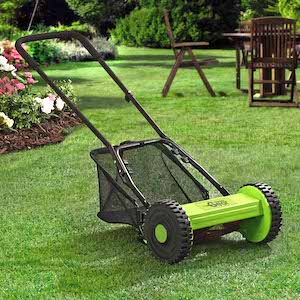What to do in your garden in May
Spring is well and truly underway! The days are longer, warming up the soil and making it the perfect time to plant up your summer bedding and tender perennials. It’s also a good opportunity to experiment with something new. See which flower seeds to sow in May.
Get your vegetable patch off to a strong start too. Whether you raise your fruit and veg from seed or prefer to get a head start by ordering strong and healthy plugs from our choice of vegetable plants, there’s plenty to keep you busy this month!
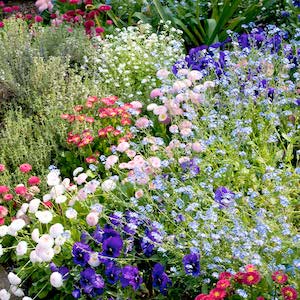
Image: Garden Ready Bedding/ Copyright: Visions BV, Netherlands
Flowering plants in May
- Plant dahlia tubers directly into their flowering positions from early May onwards.
- Summer flowering bulbs, like gladioli, can be directly planted out into beds or containers this month.
- Plant tender summer bedding plants towards the end of the month when the risk of frost is over. If weather conditions are still too cold, delay for another week or two.
- Insert plant supports for tall perennials to prevent stems snapping.
- Keep sowing hardy annual flowers to extend the flowering season.
- Pinch out the tips of your perennial plants like fuchsias. Removing the growing tips will encourage your plants to become bushier.
- Sow nasturtium seeds by scattering them over damp seed compost in modular seed trays. Alternatively, sow your seed in repurposed yoghurt pots on a sunny windowsill.
- As temperatures rise, keep checking pots and containers to make sure they receive sufficient water and don’t dry out.
- Start feeding your container and hanging basket displays with liquid plant food.
- Re-pot any pot-bound container displays this month. Freshen up large displays by top dressing the soil with fresh compost.
- Check for greenfly on spring bedding plants and bulbs like daffodils and tulips. Invest in natural pest control methods, like live ladybirds, to control infestations.
- Pot on any chrysanthemum cuttings that have successfully rooted.
- Lift and divide clumps of spring flowering bulbs when they stop flowering. Spread them through borders or plant up a container for next year’s displays.
Vegetables in May
- May is bang in the middle of asparagus season! Keep picking and enjoying your freshly harvested spears.
- Thin out beetroot and spinach seedlings this month to allow plenty of space for large roots to form.
- Ensure your developing potato tubers remain covered with a layer of soil by earthing up your plants with a sturdy rake or spade.
- Provide broad bean plants with a bit of extra support by earthing up the bases of the growing stems.
- Plant your runner and French bean plantlets out into the veg patch towards the end of the month.
- Use cloches to protect outdoor sown seeds this month.
- Sow marrow, courgette, and sweet corn seeds in the greenhouse through the month. Stagger your courgette sowings so you don’t end up with a glut in the summer.
- Sow broccoli, brussels sprouts, cauliflower, swede, kale, lettuce, peas, radish and spinach seeds outside or under cloches during early May.
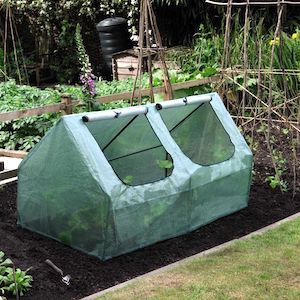
Image: Garden Grow Cloche
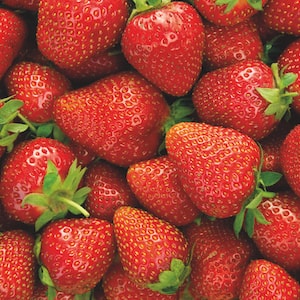
Image: Strawberry Plant – Elsanta
Fruit in May
- Keep your fruit bushes and fruit trees well watered to ensure good fruit setting and fruit development. Monitor soil moisture levels during dry spells.
- Pinch out the tips of growing shoots on your grape vine. Stop them two leaf joints beyond a developing fruit truss to focus energy on fruit development and ripening.
- Harvest forced rhubarb stems this month. Grip the stems firmly at the base, and pull them sharply away from the crown.
- Keep fruit clean and discourage mould by laying straw between your strawberry plants as they set fruit.
Pots, baskets and containers in May
- When mixing your hanging basket or container compost, incorporate a slow-release fertiliser and a handful of water storing crystals to feed and help the soil retain water.
- Plant up hanging baskets with tender perennials like fuchsias and begonias. Shelter your baskets undercover as they establish, just in case of a late frost.
- Pot up dwarf dahlia plants into containers, to provide colour from mid-summer to early autumn.
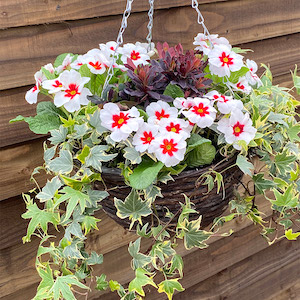
Image: Starry Eyes Mix
May lawn care
- Apply a lawn feed and weed product in periods of mild weather.
- Set your mower blades to maximum height when you cut the grass to keep vigorous spring lawn growth in check.
- Keep an eye out for fairy rings, yorkshire fog, couch weed and bindweed and eradicate them by teasing them out and completely removing the roots.
- Continue to sow new lawns and repair old lawns using self repairing lawn seed.
General May garden jobs
- Take precautions against late frosts, especially at night, by placing garden fleece over emerging crops like potatoes, covering cold frames with either polythene or sacking, and covering young plants in the greenhouse with newspaper.
- Prevent weed seedlings from becoming established by hoeing borders once a week.
- Remember, if you are planning to be away this month, make arrangements for any plant deliveries and ask a neighbour to water pots and containers. Alternatively set up an automated watering kit.
- Keep an eye out for aphids in the greenhouse and indoors. Keep any infestations under control with an appropriate bug and insect deterrent.
- Vine weevil causes quite a problem in potted plants. Use a biological nematode mixed into a solution, and water plants when larvae are active (soil temperature should approximately be above 5ºC/40ºF).
- To keep control of slugs and snails, try trapping them. Non-chemical traps like slug collars and nematode slug killer are available – only use slug pellets sparingly.
- As the days get warmer, ventilate greenhouses and conservatories to keep temperatures cool.
- Trim hedges to keep them in check as growth speeds up this month. Make sure to check for nesting birds before you cut.
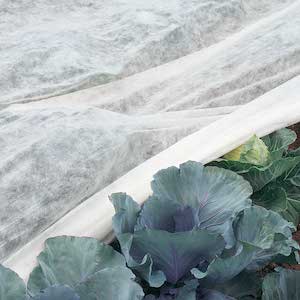
Image: Frost Protection Fleece
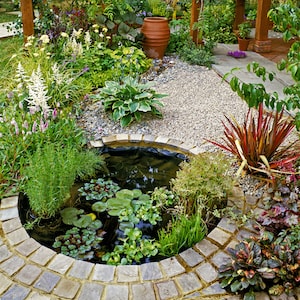
Image: Phormium Rainbow Queen
May pond care
- Plant up new pond plants like water lilies in new aquatic baskets and special compost. Don’t use ordinary compost as it encourages algae and is too rich.
- Lift and divide any plants that have become overcrowded. Trim stray roots every few years to keep them compact and tidy.
- If you have a new pond, let the water settle completely for at least six weeks before introducing fish.
- When the water reaches 10ºC (50ºF), start to feed fish. Remove any uneaten food about 10 minutes after feeding.
Suttons Seeds recommend these areas which may also be of interest.
More Monthly Gardening Tasks by Month
- Previous month: Jobs to do in your garden in April
- Next month: Jobs to do in your garden in June


